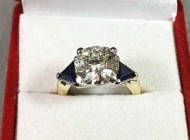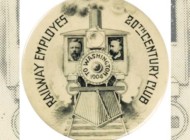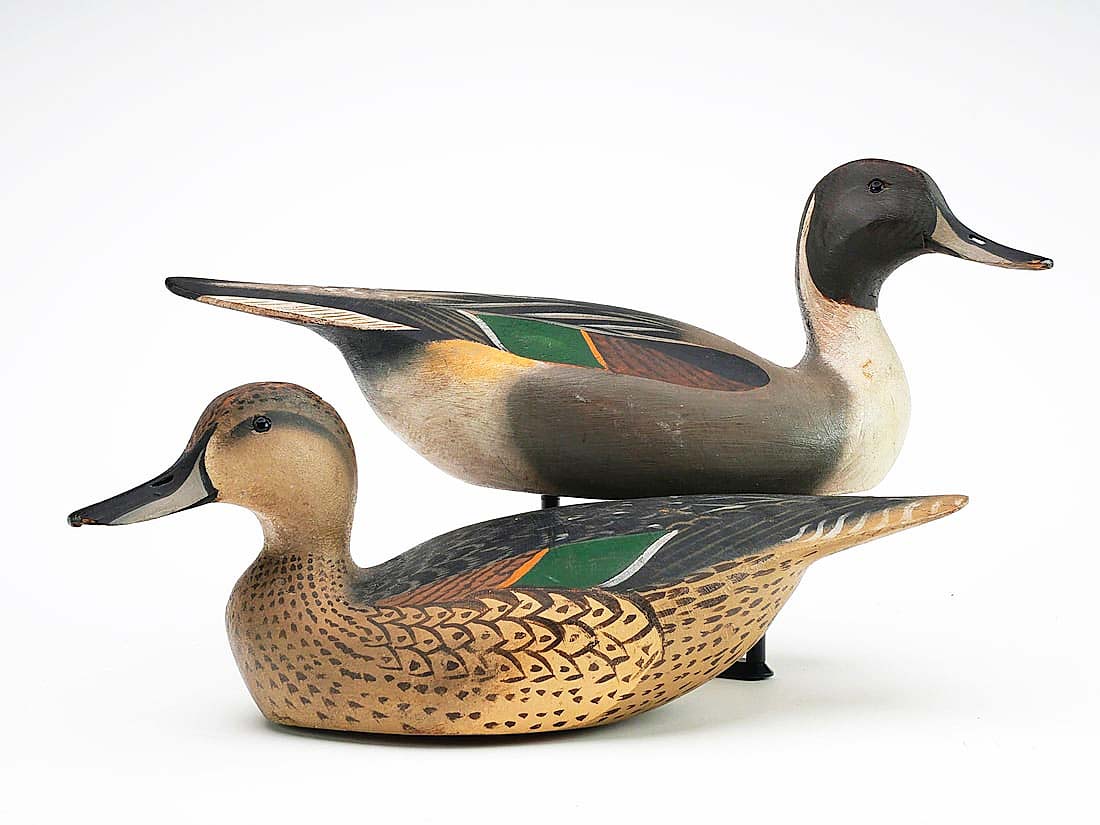
Realizing $132,000, this pair of pintails by Lem and Steve Ward, Crisfield, Md., was the highest priced lot in the sale.
Review & Onsite Photos by Rick Russack
EASTON, MD. — Guyette & Deeter’s November 8-9 sale was the company’s final major sale of the year. It capped the 40th year the company has been in business, with this year’s annual sales tallying about $21 million. It was the firm’s best-ever year and the first time it exceeded $20 million. The auction house now conducts five major cataloged sales; three of decoys, folk art and sporting art and two of sporting firearms. In this sale, which achieved $3.2 million, about 70 lots brought five-figure prices, seven of which were paintings. Of the 575 lots, only about 20 were passed.
This sale, with offerings from four major collections, was well balanced with decoys and carvings for all interests and price ranges: Long Island and Virginia shorebirds, Chesapeake Bay decoys, Illinois River decoys, West Coast decoys, fish decoys, New England decoys, factory decoys and a collection of walking sticks, among others. Contemporary carvings included works by some of today’s master craftsmen. Sporting art featured works by some of the genre’s most sought-after artists.
It’s not been uncommon recently for these reviews of decoy auctions to note that the highest price of the sale was earned by a decoy by Cape Cod carver’s Elmer Crowell. However, that’s not the case for this sale as the top Crowell lot finished behind a pair of pintails by Crisfield, Md., brothers, Lem and Steve Ward. With slightly turned heads, the pair earned $132,000, the top price of the sale; four of their birds were among the 12 highest-priced lots. A pintail hen with deep shoulder carving and particularly detailed paint earned $90,000. It had been made as a gift for Dr Edgar Burke, a close friend of the brothers. A rare fat-jaw model goldeneye hen, circa the late 1920’s, with a slightly turned and tucked head, sold for $72,000. Rounding out the four, a Canada goose — made on a special order for the Bishop’s Head Gun Club — brought $66,000.
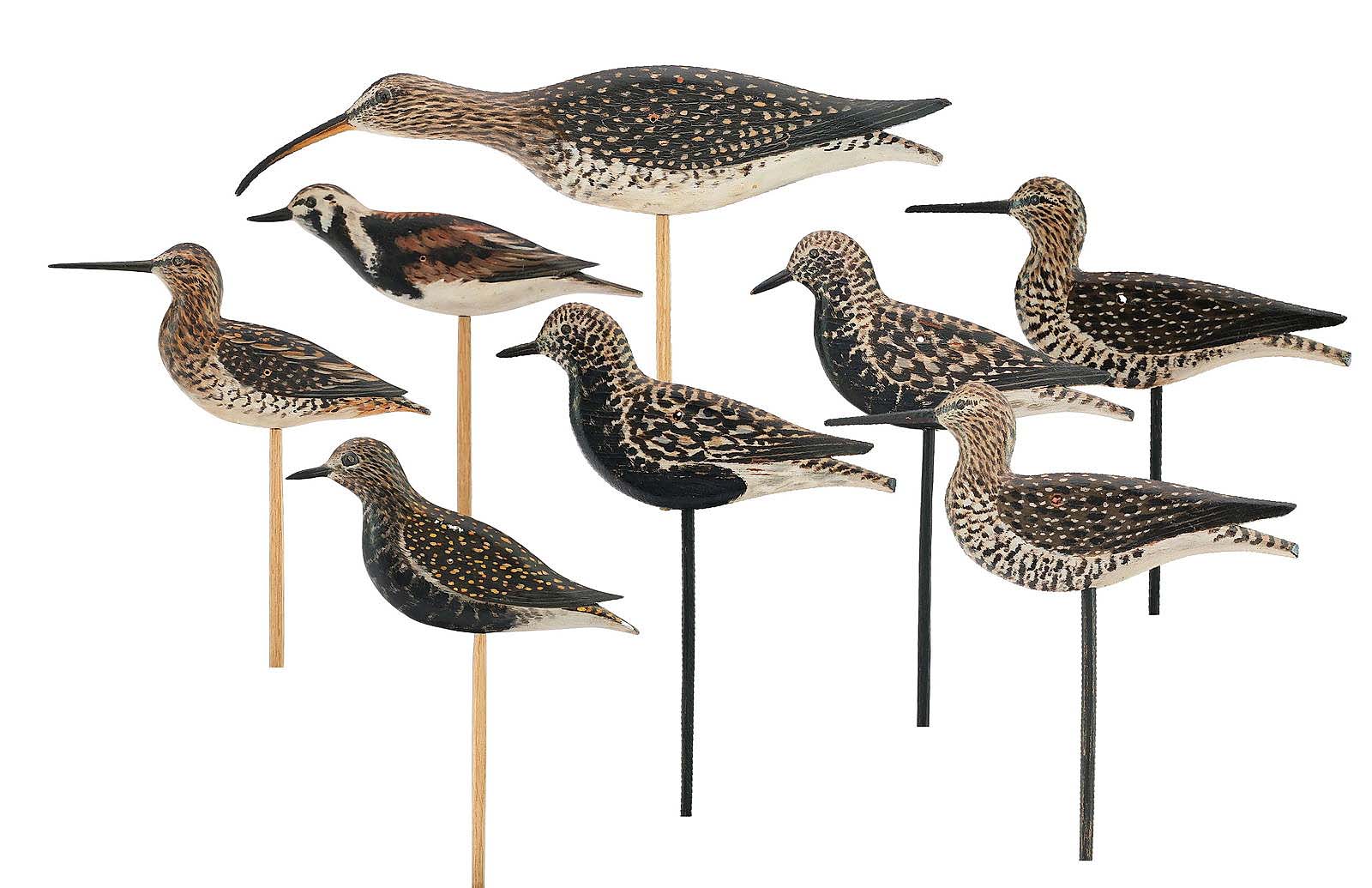
Perhaps the rarest, and certainly the highest priced, Elmer Crowell lot in the sale was this rig of eight “flatties” which sold for $114,000.
There were more than a dozen carvings by the Ward Brothers in the sale. Lem is generally credited with doing most of the painting, while Steve is recognized to have done most of the carving.
More than a dozen lots by Elmer Crowell sold the first day, four of which finished among the sale’s dozen highest prices. Earning the sale’s second highest price, $114,000, was a rare rig of eight “flattie” shorebirds. The catalog noted that four of the eight were extremely rare and possibly unique: the running curlew, ruddy turnstone, dowitcher and golden plover. Each of the eight had split-tail carving, tack eyes and detailed paint. They were bought by a “newer” phone bidder who was active throughout the sale, winning several of the Crowell lots. One of Crowell’s shorebirds, a dowitcher with relief carved primary and tail feathers, brought $54,000. It was in outstanding condition and had been bought by the Larkin family of Buffalo, N.Y., directly from Crowell. An unusual full-size standing wood duck on a base, with turned head and relief wingtips and tail feather carving brought $48,000. Another of the Larkin family birds that was also bought directly from Crowell was a green wing teal with a slightly turned head. In fine condition, it brought $42,000. There were a number of other Crowell decoys and miniature carvings in the sale, ranging in price upwards from a miniature canvasback hen that sold for $480.
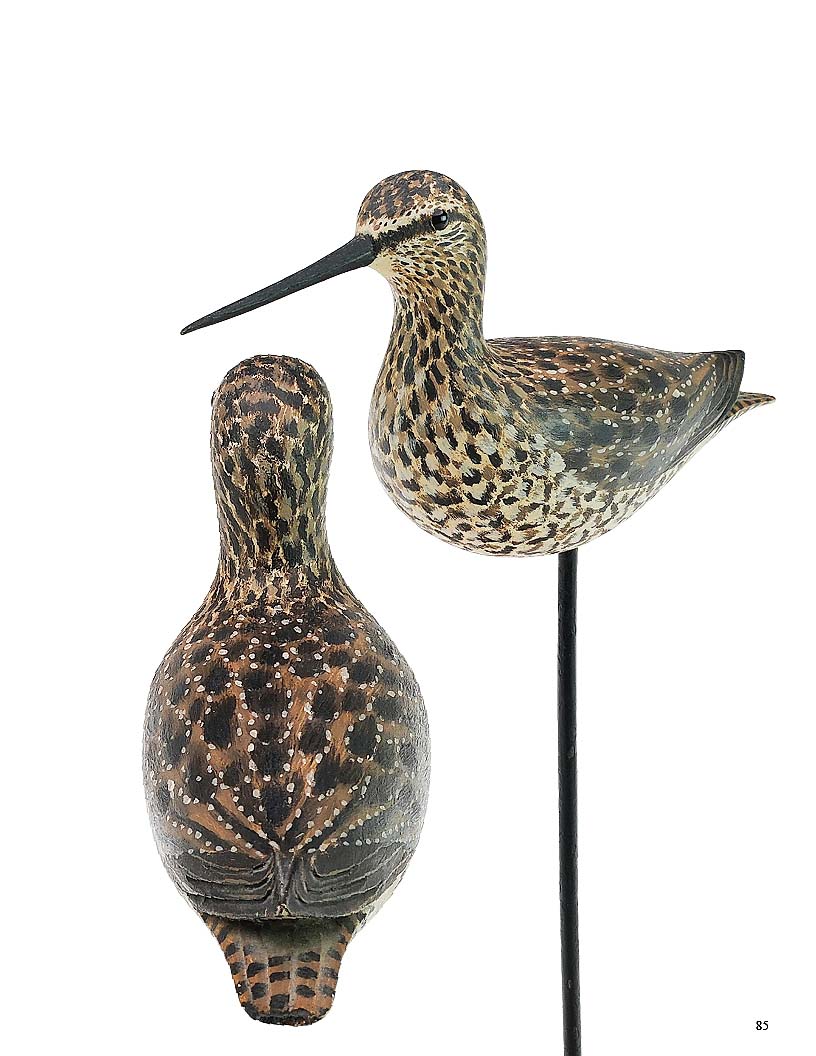
Measuring 12 inches long, Elmer Crowell’s dowitcher with relief carved primary and tail feathers sold for $54,000.
There were hundreds of decoys by sought-after carvers. The selection of shorebirds was especially strong, with examples from several regions. A late Nineteenth Century black bellied plover with a turned, slightly cocked head, with relief wing carving, carved eyes and shoulders by a member of Long Island’s Verity family brought $36,000. Another Long Island plover by Obediah Verity (1813-1901) realized $33,000. A sanderling with split tail carving and shoe button eyes by Elmer Crowell sold for $30,000. Moving south, a running curlew with carved eyes and split tail carving by an unidentified Cobb Island, Va., carver realized $24,000.
Decoys by other carvers included a rare bluebill with incised bill carving by Joesph Lincoln (1859-1938), which earned $21,600. It was cataloged as “possibly the finest Lincoln bluebill known.” An outstanding American merganser drake with a slightly turned head, extended crest and fluted tail by Virginia carver Delbert Hudson (1928-1980) finished at $16,800. There were outstanding offerings that brought far less than the prices quoted above. A very folky early merganser hen, with a natural root head and neck and extended crest from the Kangas collection, went out for $3,000. It had been made by Roger Williams (1770-1840) on Long Island. A two-piece Canada goose, with a raised head and tack eyes, by James Holly (1855-1935) of Havre de Grace, Md., closed at $2,700. A robin snipe by New Jersey’s Harry Shourds (1861-1920) made $3,600.
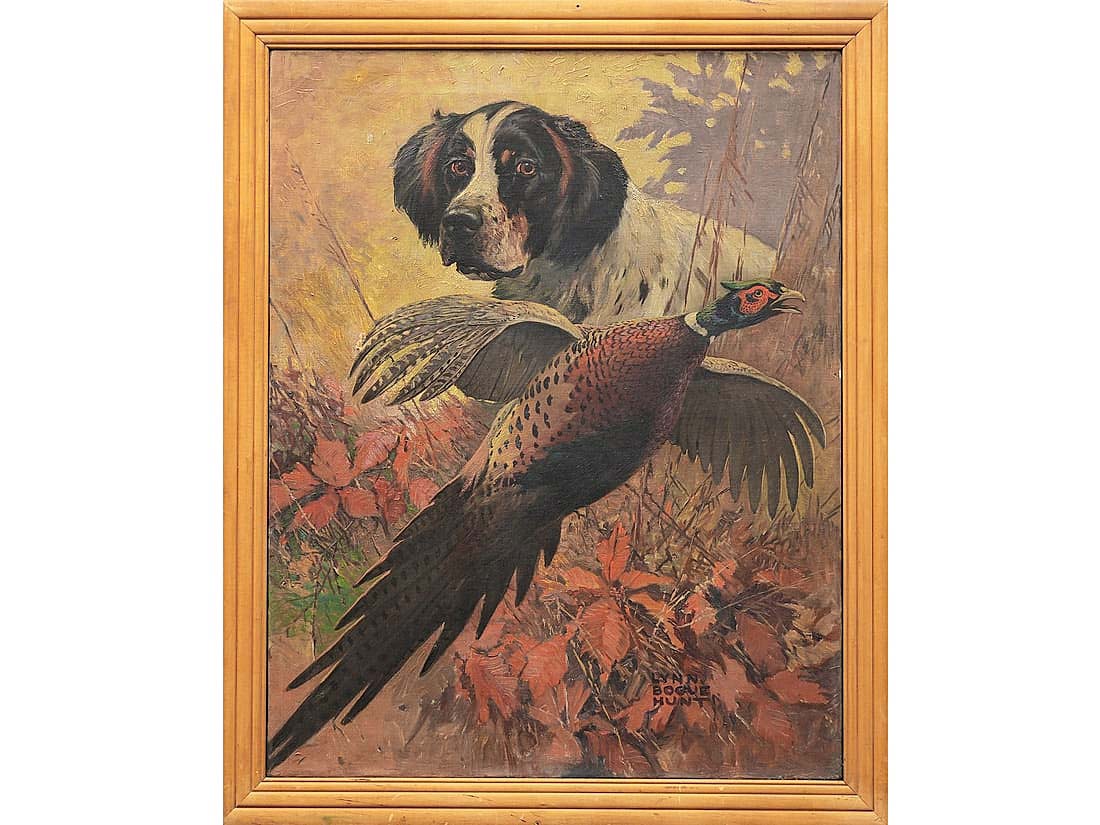
Fresh to the market, Lyn Bogue Hunt’s oil painting of a setter with a startled pheasant led the selection of sporting art, finishing at $45,000.
Paintings included several sporting scenes. Topping the selection was a fresh-to-the-market oil by Lynn Bogue Hunt (1878-1960), which depicted a setter and a pheasant amid fall foliage; it earned $45,000. There were two oil on canvas paintings by David Maass (b 1929), each depicting pheasants in wintery landscapes. One brought $27,000 while the other achieved $10,200. A scene of a retriever with a mallard in its mouth by Arthur Fitzwilliam Tait (1819-1905) also sold for $10,200. Other paintings included a maritime rescue scene by Antonio Jacobsen (1850-1921) that traded hands for $12,000.
The sale began with contemporary decorative carvings, including 15 made by Mark McNair of Craddockville, Va. Born in 1950, he is one of the well-respected carvers with a large following. Almost all of the 15 McNair carvings sold well beyond their high estimates, with most being sold to one phone bidder who, over the last two or three years, has become interested in contemporary carvings. A colorful early wood duck drake, 12 inches long, sold for $8,400. A 21-inch red-breasted merganser drake, with an applied leather crest, brought $4,800. The McNair carvings were immediately followed by a half dozen carvings by William Gibian, another Virginia carver who was born in 1946. His pair of red-breasted mergansers with extended crests and relief wing carving sold for $3,300 and his 13-inch pigeon with a slightly turned head gaveled down at $1,560. Carvings by Eddie Wozny (b 1959) included a group carving of three chipmunks eating peanuts from a discarded paper bag at a circus; it sold for $12,000.
After the sale, Jon Deeter commented, “the market interest continues to be strong. This sale and preview were held in conjunction with the Easton Waterfowl Festival, which drew a large crowd. We had about 100 buyers register for the sale at that preview. I was pleased to see how well we did with paintings. I think that’s a growth area for us. Our next sale will include a collection of fine watches and fine writing instruments. I think our regular customers will be interested in those categories. It’s been a good year for us, we’ve added staff, and we’ll continue to grow.”
For additional information, www.guyetteanddeeter.com or 410-745-0485.


















